In Bengal’s tea estates, workers co-exist with leopards, but they don’t always see eye to eye
Human-leopard conflict is on the rise in North Bengal. The state forest department promotes trapping and relocation of leopards. But, wildlife experts claim such measures worsen the conflict.


Sumitra Oraon, tea garden labourer in North Bengal, suffered severe injuries when a leopard attacked her.
Last year on November 2, at around 6 am, Sumitra Oraon, a slightly-built tea garden labourer at the Nowera Nuddy tea estate, left her home as usual to earn her daily wage of Rs 176. Little did she know then what lay in store for her. Around 11.30 am, as she prepared to drop off the tea leaves she had plucked all morning to be weighed before heading for lunch, a leopard crashed through the tea bushes, and attacked her.
Fortunately, Sumitra escaped with her life, but she had to be hospitalised for 12 days to treat the injuries on her arms and back. The tea estate and the forest department looked after her medical bills.

The picturesque estate, where Sumitra encountered the leopard, is located about 650 kilometres from Kolkata, the state capital of West Bengal. It falls in the Dooars region, the alluvial flood plains in the foothills of the eastern Himalayas, and is adjacent to the Gorumara National Park, in Jalpaiguri, one of the eight districts of North Bengal.
“Leopards have been residing in the tea estates of North Bengal since they were set up in the late 1800s by the British,” Pradeep Vyas, Vigilance Commissioner of West Bengal told Gaon Connection. The plantations of North Bengal, surrounded by forests and crisscrossed by rivers, have long been home to them. The tea estate of Nowera Nuddy is named after the Neora River that ultimately joins the Teesta River.
Tea estate workers often come face to face with the leopards. And sometimes it leads to casualties on both sides.
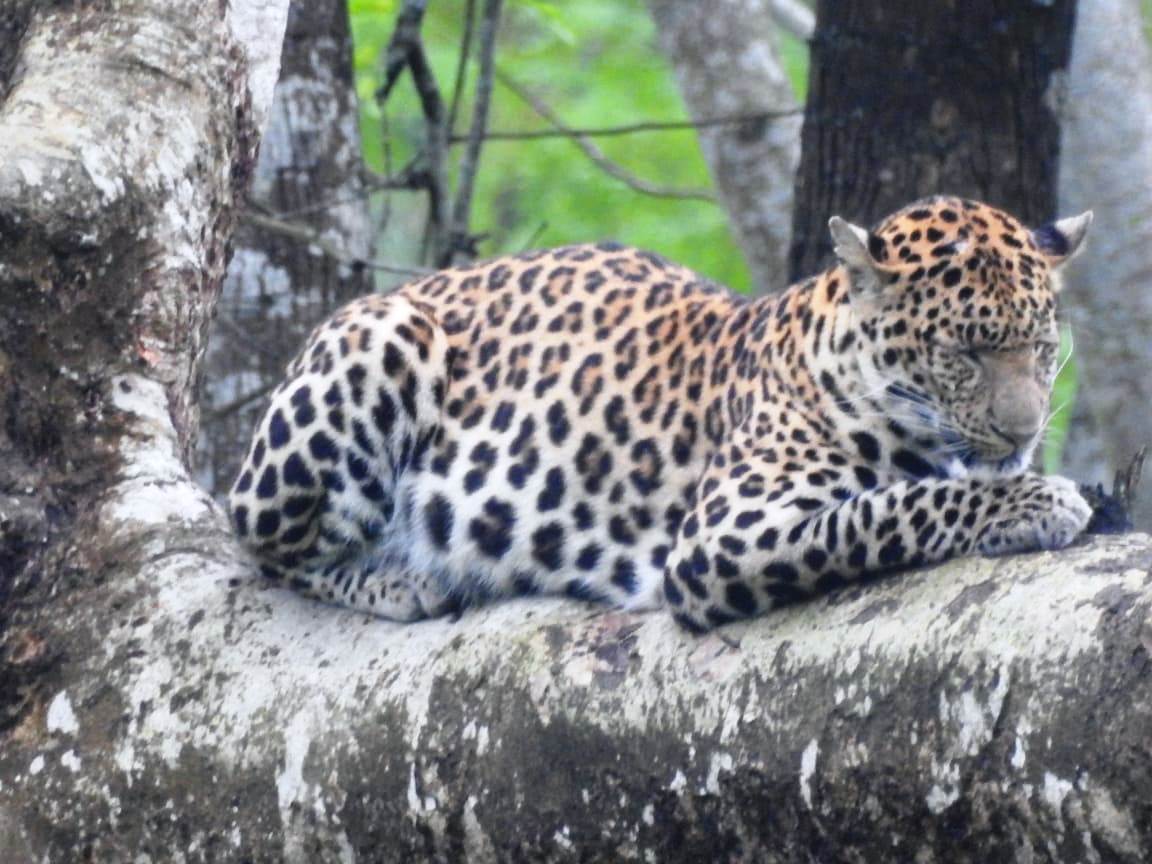
A joint study by Pradeep Vyas and K Sengupta has recorded 101 leopard attacks on the local people between 2000 and 2013 because of which 10 people died. During the same period, 245 leopard deaths were recorded, of which 185 were natural deaths and 60 attributed to accidents, retaliatory killings, poaching and elimination as rogues.
Some experts attribute these leopard attacks to an increase in their population in the North Bengal region. But according to Vyas, it could also be due to a diminished prey base, fragmentation of habitat and an increase in disturbances in leopard habitats among other factors.
At home in the estates
With an expansion in the number of small tea growers, as cultivating paddy is no longer profitable, the area under tea has increased in North Bengal. It is estimated there are nearly 300 organised tea estates in the region. Along with that there seems to be an increase in the leopard population leading to more human-leopard encounters.
Estates provide leopards a safe haven. Apart from their densely packed tea bushes, they also have big trees, with pepper vines climbing around them, which offer shade besides fuelwood. These provide ample cover and protection, especially to female leopards for their litter. Guatemala Grass is often planted to fix nitrogen in the soil. The grass grows up to six feet, and is perfect for the leopards to remain hidden.

“Neglected estates where tea bushes are sometimes allowed to grow 10 to 12 feet high are a good cover for the leopards,” Samiran Raj, the range officer of Bagdogra forest range in Siliguri area of North Bengal told Gaon Connection. He said there were 11 tea gardens in his area of operation where hectares of sprawling, continuous land provided the animals ample space to move around unhindered.
The leopards have an easy access to prey in the plantations, such as dogs, pigs and poultry kept by the tea estate workers. And, “the lack of other predators ensures the survival rate of the cubs, often spotted in the dry drains in the summer months,” pointed out Avijan Saha, a Siliguri-based wildlife photojournalist.
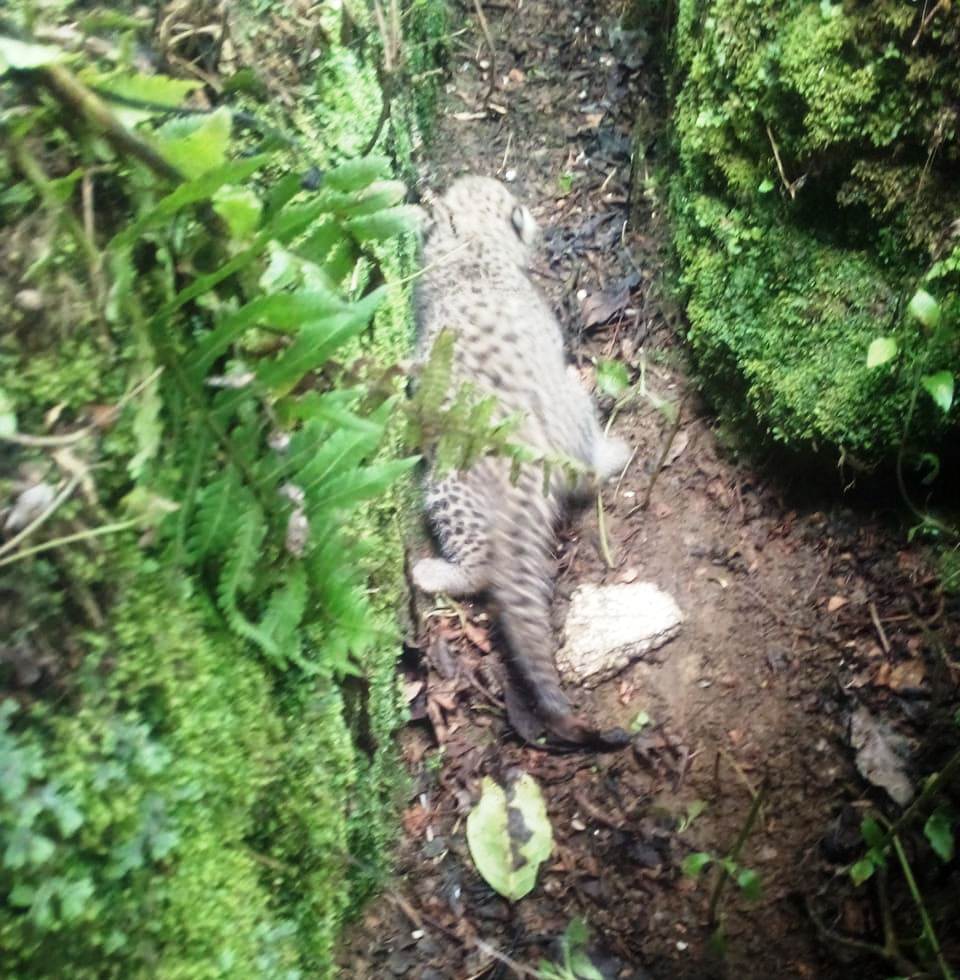
The leopards do not just come to the estates to litter. They reside in the plantations and their population in tea gardens is sometimes as much if not more than those in the protected areas, informed Aritra Kshettry, a wildlife biologist. A study conducted by him this year revealed that leopard density was 15 per 100 square kilometres in tea gardens of North Bengal.
Caution and co-existence
Leopards are elusive and difficult to spot. So, attacks in the estates happen when the leopards suddenly come face to face with humans, said Rajkumar Layek, range officer of Gorumara Wildlife division who has 32 tea gardens in his area.
Or, when at night, workers, high on hadia (rice beer), come out of their homes and wander around, startling the leopards, said Vyas.
“I urge workers to be careful at night, sing or play songs on their phones and whistle while moving about,” said Layek.
Forest officials encourage caution and co-existence. People are requested to form groups while travelling at night and never leave children unattended.
But, there are encounters and some are deadly. And, as per research data, the human-leopard conflict is on the rise in North Bengal.
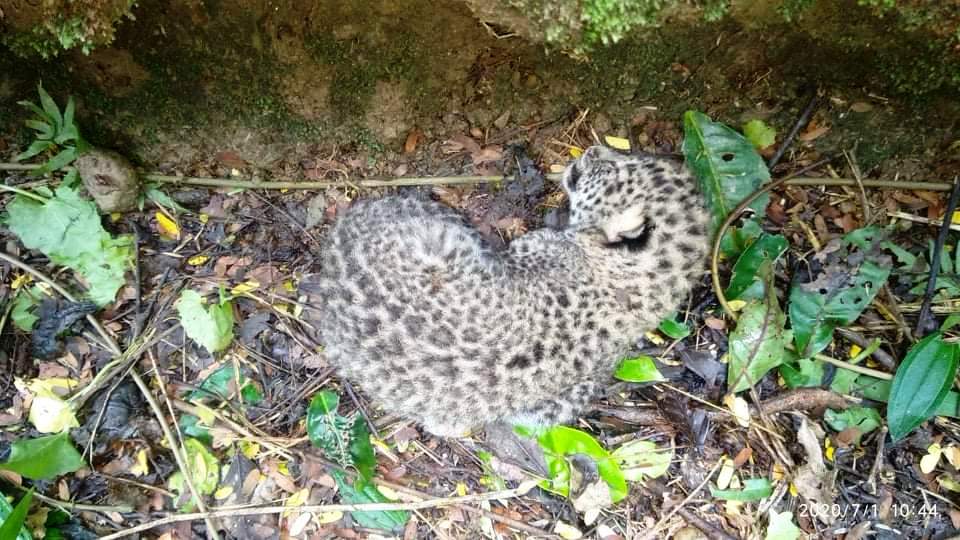
A 2018 study published in the journal ‘PLOS One’ has recorded leopard attacks on humans in the North Bengal region. Between 1993 and 1997, there were 121 such attacks, thus, over 30 attacks a year. Between 2001 and 2008, 243 leopard attacks were recorded. This meant about 35 attacks a year. By the next decade, between 2011 and 2016 these encounters had increased to 420, which translates to 84 attacks per year.
Another study published this year in Global Ecology and Conservation points out the instances of leopard attacks have increased from 34 cases per year on an average (between 2001 and 2008), to 56 cases per year (between 2009 and 2018).
A reason for close encounters is the fact that when tea bushes are pruned, the cover for the leopards is reduced. This drives them towards the bits of the estate that are still dense and green and unpruned. And that is where the workers are plucking tea.
Whereas some experts point out towards the rising number of leopard population in the North Bengal region, Kshettry said it was difficult to pinpoint the exact number of leopards in the area. “Unlike tigers that live within the forest, leopards also exist in large numbers outside the protected areas. The forest department does not have the technical capability to carry out such operations in the tea gardens,” he said.
Tea estates are launching awareness drives and outreach programmes including nukkad nataks (street plays) to mitigate the rising conflict. Nowera Nuddy tea estate has set up a six-member team to prevent encounters and ensure the wellbeing of the nearly thousand tea-estate workers, and the inhabitants of the nearby villages.
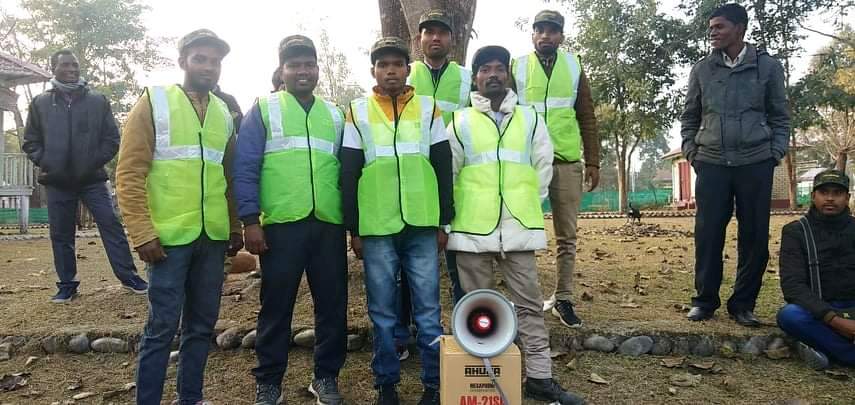
Unfortunately, on that particular November morning last year, when Sumitra was attacked, the squad was elsewhere. “The team keeps in touch with the estate manager, warning of leopard presence in particular sections of the estate. We move in groups, carry torches and kukri (machete) for safety,” Ajit Oraon, one of the response team members told Gaon Connection.
A number of wildlife squads have been commissioned in various parts of North Bengal to handle such encounters.
Trapping and relocating: Does it work?
The West Bengal forest department advocates trapping of leopards as a measure to reduce encounters, especially when there is public pressure to do so. The forest department has captured 25 leopards in tea gardens between 2010 and 2013. They were trapped in cages and released into the Buxa Tiger Reserve and Jaldapara National Park located in the Alipurdduar district of West Bengal, or the Gorumara National Park.
There are conflicting opinions about the effectiveness of trapping leopards and relocating them.
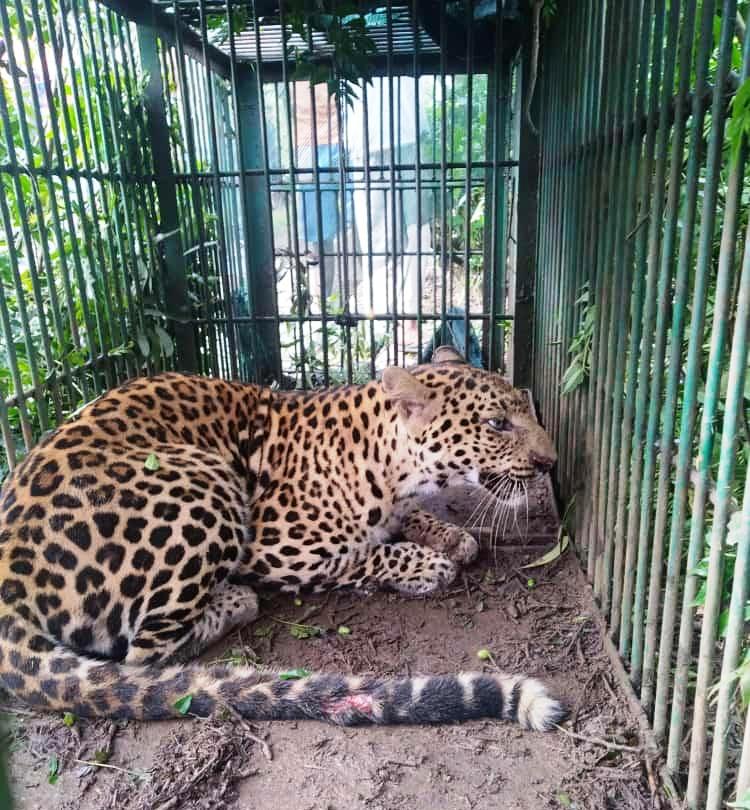
“Indiscriminate trapping and translocation of leopards, especially in the Gorumara division in Jalpaiguri district have disrupted leopard territories resulting in stress and more accidental encounters between people and leopards. The only way to reduce this would be to stop the practice,” said Kshettry.
Like him, there are other wildlife experts who are against trapping. In their opinion, when an animal is captured and released, its first instinct is to make its way back to its original habitation. In the meantime, some other animal may have moved into its territory. These new entrants are not yet used to human habitation so close by and the conflicts increase.
But sometimes there is no other alternative, argued Bishwajit Bisoi, range officer at the Jaldapara National Park in the Alipurduar district. In his earlier posting in an area that included the Tulsipara, Ramjhora and Garganda tea estates, there were many encounters within a 50 square kilometre radius.
“When I took charge in December 2018, leopards had already killed three children and injured seven to eight others. As these tea gardens were closed down for three years, the leopard population in them increased. When they reopened, the encounters increased,” Bisoi told Gaon Connection.
So, teams were set up; leopard movements were tracked, and sites identified through camera traps. “We started setting up cages to catch the leopards and placed goats and sheep as bait. By February 2019, nearly 10 leopards were trapped.”
“The forest department is attempting capture and relocation due to pressure from powerful people and tea garden management, Vidya Athreya, associate director-conservation science, Centre for Wildlife Studies, told Gaon Connection.
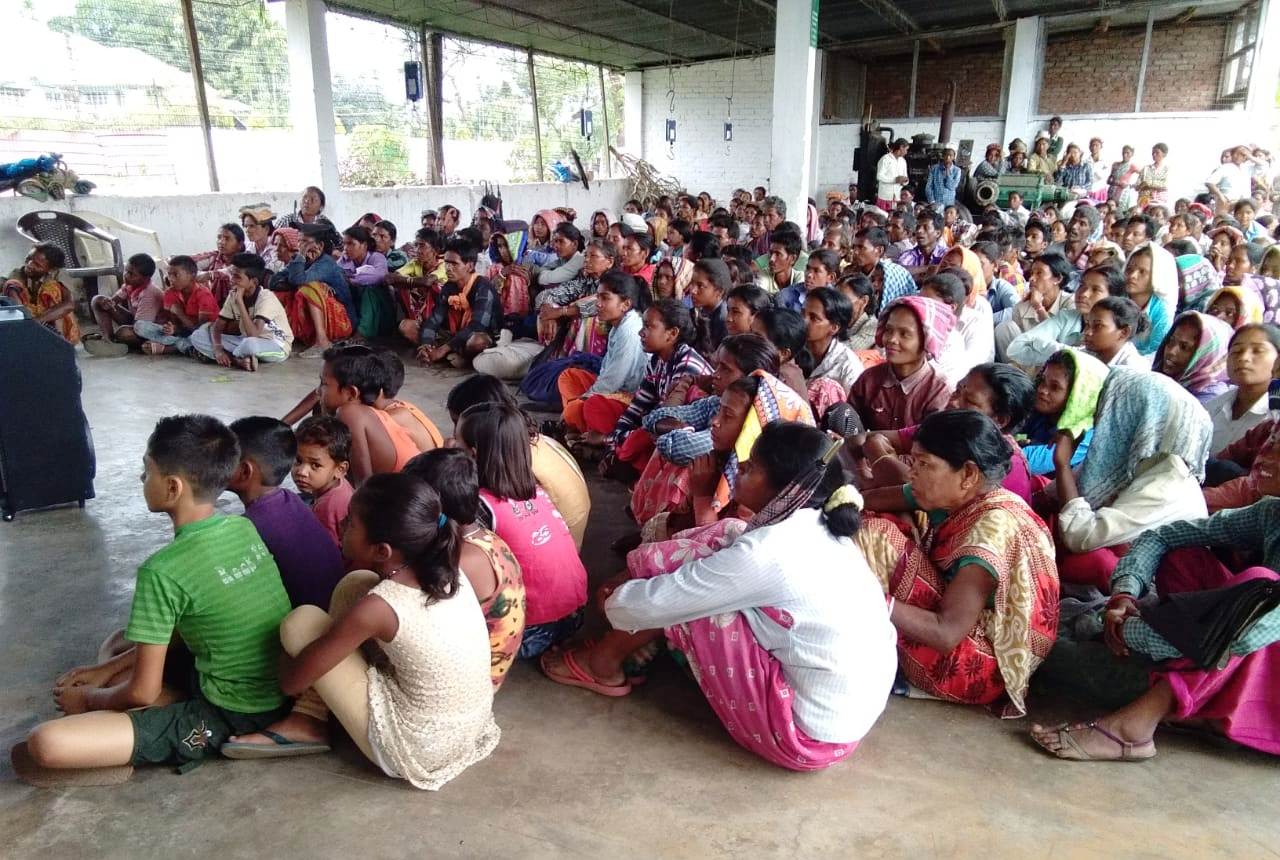
“Everybody has been thinking it as a solution for a long time now. But these animals are social and territorial. Adult females always have cubs with them. So, when they are taken out, problems arise,” she said. These animals, when picked up, are also highly stressed and put in trap cages for release far away, but they cannot stay away and try to return, she added.
This leads to conflicts. While some animals create conflict near release sites and attack humans, which otherwise they will not, others become prone to mortality as they try to navigate the new landscapes. Some may survive, but overall it is not recommended at all, said Athreya.
Being armed with more information about the issue could help mitigate matters, said Kshettry. And this, he believed, could be achieved by increased awareness and outreach programmes to educate people about safety practices.
“It is crucial to understand the reasons for these encounters, the intensity of livestock predation and the extent of leopard mortality,” he emphasised. As leopards depend on livestock for food, cattle protection should be improved and victims should receive good insurance money. People rarely report livestock loss as the compensation amount is too low.
It is important to note that in India, leopards have always resided in close proximity with people, but it is only recently that research is focusing on species that exist outside protected areas.
“Translocation as prescribed by the IUCN is a strategy used to increase the population of a species, say for instance, when tigers were released in the Panna Tiger Reserve in Madhya Pradesh, which had a good prey base already. It was a success story,” said Athreya.
But translocation is not meant for animals residing outside in rural landscapes, she said. Take the case of Sita, a female leopard, who was captured close to the Maharashtra-Gujarat border and released at Trimbak Ghatin Nashik. She was pregnant and delivered near the release site. She lived there for four months and walked back 70 kilometres in a week and returned to where she was caught.
Athreya sums up the debate on human-leopard conflict in the country: “India is unique because we have wildlife living among people. If they were restricted to only protected areas, they would be pretty much dead by now. They have learnt to adapt and historically people have had relationships with animals. There needs to be a greater acceptance about the fact that a lot of animals live in rural landscapes. Capture will lead to conflicts.”
All Photo Credit: By arrangement.

